Tomato Paste vs. Tomato Sauce: An Analysis of Quality, Price, and Value Introduction: Tomato paste and tomato sauce are both popular ingredients used in cooking worldwide. These products, made from tomatoes, can add depth, flavor, and richness to numerous dishes. However, when it comes to choosing between tomato paste and tomato sauce, the decision can be challenging. This article aims to provide a comprehensive analysis of the two products, focusing on their quality, price, and overall value for consumers. Quality Comparison: 1. Tomato Paste: – Tomato paste is made by cooking down tomatoes for several hours and then straining out the seeds and skin. The result is a concentrated product with a thick consistency and intense tomato flavor. – Due to its concentrated nature, tomato paste has a stronger taste than tomato sauce, making it ideal for recipes that require bold tomato flavor. – It is important to choose tomato paste made from high-quality tomatoes without any additives or preservatives for optimal taste and health benefits. 2. Tomato Sauce: – Tomato sauce is made by blending cooked tomatoes with various seasonings, such as onions, garlic, herbs, and spices. It is typically smoother in texture compared to tomato paste. – Tomato sauce offers a more balanced and mellow flavor profile, making it suitable for a wide range of dishes, including pasta, stews, and soups. – It is crucial to choose tomato sauce made with natural ingredients, without excessive amounts of salt or added sugars, to maintain its nutritional value. Price Considerations: 1. Tomato Paste: – Tomato paste is generally more expensive than tomato sauce due to its concentrated nature. The process of cooking down tomatoes to reduce them into paste requires more time and resources. – However, since tomato paste is used in smaller quantities in recipes, such as a tablespoon or two, a can or tube of tomato paste can last for multiple dishes, making it cost-effective in the long run. 2. Tomato Sauce: – Tomato sauce is usually more affordable than tomato paste, primarily because it is less concentrated and requires fewer tomatoes during the production process. – While the initial purchase price may be lower, it is important to consider that tomato sauce is typically used in larger quantities in recipes. Therefore, the cost-per-use may be higher compared to tomato paste, especially when preparing dishes that require a rich tomato flavor. Overall Value and Versatility: 1. Tomato Paste: – Tomato paste offers excellent value in terms of flavor impact and shelf life. Its concentrated form allows for a small amount to go a long way in enhancing the taste of various dishes.
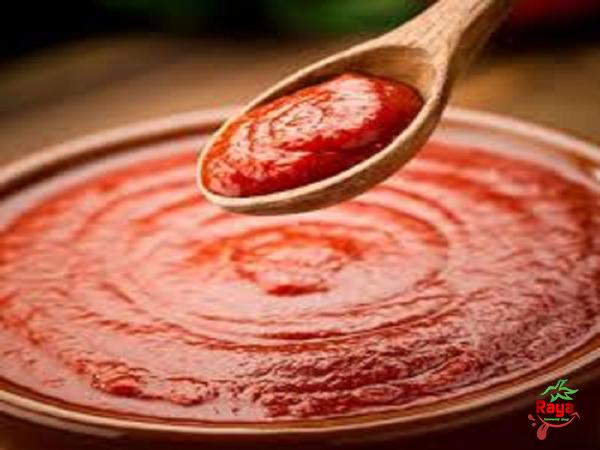
tomato paste
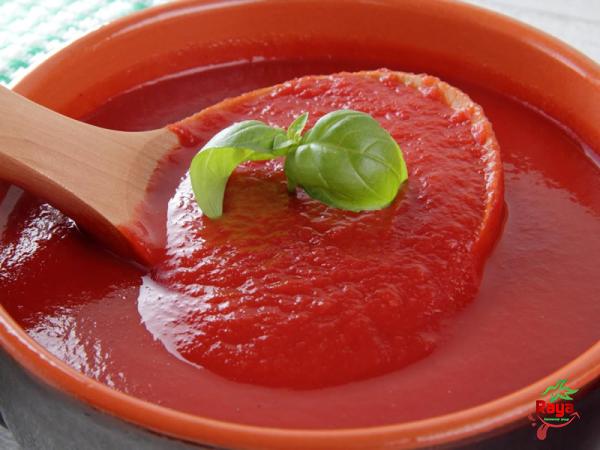 Tomato paste is a versatile ingredient that can be used in a wide array of recipes, including marinades, soups, stews, and sauces. It adds depth and richness, making it an essential component in many cuisines. – Furthermore, tomato paste has a longer shelf life than tomato sauce, often lasting up to a year when stored properly in a cool, dark place. 2. Tomato Sauce: – Tomato sauce provides value through its convenience and versatility. It serves as a ready-to-use ingredient for numerous dishes, saving time and effort in the kitchen. – Tomato sauce is a staple in many cuisines and can be used as a base for pasta sauces, pizzas, lasagnas, and more. Its smooth texture and balanced flavor make it suitable for those seeking a milder tomato taste. – However, tomato sauce typically has a shorter shelf life compared to tomato paste, especially once it is opened. It should be consumed within a few days or refrigerated for later use. Conclusion: When considering tomato paste vs. tomato sauce, the choice ultimately depends on personal preferences, desired flavor intensity, and intended use in recipes. Tomato paste offers a concentrated and bold flavor, ideal for recipes requiring a significant tomato presence. On the other hand, tomato sauce provides a more versatile option with a milder taste and extensive use in various dishes. While tomato paste may initially appear more expensive, its concentrated nature and longer shelf life make it an economical choice over time. Ultimately, both tomato paste and tomato sauce have their strengths, and choosing the right product depends on the specific culinary needs and preferences of the consumer.Title: Tomato Paste vs. Tomato Sauce: An Analysis of Quality, Price, and Value I. Quality Comparison: When it comes to quality, both tomato paste and tomato sauce have their strengths and differences. 1. Tomato Paste: Tomato paste is made from ripe tomatoes that have been cooked down for several hours to remove excess moisture and achieve a concentrated consistency. The seeds and skin are usually strained out, resulting in a smooth texture. The process of cooking down the tomatoes intensifies their flavor, making tomato paste a powerhouse ingredient in cooking. Its bold and deep taste lends itself well to dishes like hearty stews, braises, and rich pasta sauces.
Tomato paste is a versatile ingredient that can be used in a wide array of recipes, including marinades, soups, stews, and sauces. It adds depth and richness, making it an essential component in many cuisines. – Furthermore, tomato paste has a longer shelf life than tomato sauce, often lasting up to a year when stored properly in a cool, dark place. 2. Tomato Sauce: – Tomato sauce provides value through its convenience and versatility. It serves as a ready-to-use ingredient for numerous dishes, saving time and effort in the kitchen. – Tomato sauce is a staple in many cuisines and can be used as a base for pasta sauces, pizzas, lasagnas, and more. Its smooth texture and balanced flavor make it suitable for those seeking a milder tomato taste. – However, tomato sauce typically has a shorter shelf life compared to tomato paste, especially once it is opened. It should be consumed within a few days or refrigerated for later use. Conclusion: When considering tomato paste vs. tomato sauce, the choice ultimately depends on personal preferences, desired flavor intensity, and intended use in recipes. Tomato paste offers a concentrated and bold flavor, ideal for recipes requiring a significant tomato presence. On the other hand, tomato sauce provides a more versatile option with a milder taste and extensive use in various dishes. While tomato paste may initially appear more expensive, its concentrated nature and longer shelf life make it an economical choice over time. Ultimately, both tomato paste and tomato sauce have their strengths, and choosing the right product depends on the specific culinary needs and preferences of the consumer.Title: Tomato Paste vs. Tomato Sauce: An Analysis of Quality, Price, and Value I. Quality Comparison: When it comes to quality, both tomato paste and tomato sauce have their strengths and differences. 1. Tomato Paste: Tomato paste is made from ripe tomatoes that have been cooked down for several hours to remove excess moisture and achieve a concentrated consistency. The seeds and skin are usually strained out, resulting in a smooth texture. The process of cooking down the tomatoes intensifies their flavor, making tomato paste a powerhouse ingredient in cooking. Its bold and deep taste lends itself well to dishes like hearty stews, braises, and rich pasta sauces.
Specifications of tomato paste
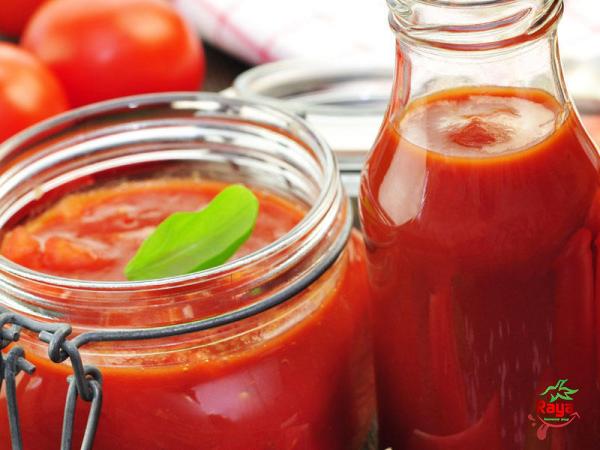 2. Tomato Sauce: Tomato sauce, on the other hand, is made by blending cooked tomatoes with various seasonings and ingredients like onions, garlic, herbs, and spices. The blended mixture is then simmered to achieve a smooth and homogenous texture. Tomato sauce has a more balanced flavor profile compared to tomato paste, with the added benefit of complementing a wider range of dishes. It is commonly used as a base for pasta sauces, pizzas, and soups, offering a mild tomato taste that allows other ingredients to shine while providing a subtle tomato undertone. II. Price Considerations: Price is an important aspect to consider when deciding between tomato paste and tomato sauce. 1. Tomato Paste: Tomato paste tends to be pricier than tomato sauce due to its concentration and the labor-intensive process of reducing tomatoes into a thick paste. However, it is worth noting that tomato paste is used in smaller quantities in recipes. A tablespoon or two of tomato paste can add significant flavor to a dish, meaning a can or tube of tomato paste can last through multiple meals. In terms of value for money, tomato paste is a cost-effective option over the long term. 2. Tomato Sauce: Tomato sauce, on the other hand, is generally more affordable than tomato paste. Its production requires fewer tomatoes and less processing time, making it a budget-friendly option for consumers. However, tomato sauce is typically used in larger quantities in recipes, which can increase the overall cost per use, especially when aiming for a rich tomato flavor. III. Overall Value and Versatility: Considering the overall value and versatility of tomato paste and tomato sauce will further aid in making an informed purchase decision. 1. Tomato Paste: Tomato paste offers excellent value and versatility. Its concentrated form means that a small amount can have a significant impact on the flavor of dishes. In addition to its use in pasta sauces, tomato paste can be utilized in soups, stews, marinades, and even as a pizza sauce. It adds depth, richness, and a concentrated tomato flavor to various culinary creations. Additionally, tomato paste has a longer shelf life compared to tomato sauce, making it a convenient pantry staple. 2. Tomato Sauce: Tomato sauce provides value through its convenience and versatility. It is readily available in pre-made form, saving time and effort in the kitchen. Tomato sauce can be used as a base for a variety of classic and contemporary recipes, including pasta sauces, lasagnas, baked dishes, and as a topping for pizzas. Its smooth texture and balanced flavor make it suitable for those seeking a milder tomato taste. However, it is important to choose tomato sauce made with natural ingredients and without excessive amounts of salt or added sugars to maintain its nutritional value. IV. Health Considerations: When considering the health aspects of tomato paste and tomato sauce, several factors come into play. 1. Tomato Paste: Tomato paste contains a higher concentration of nutrients compared to tomato sauce due to its reduced form. Tomato paste is a rich source of vitamins A, C, and K, as well as antioxidants like lycopene. It is also low in calories and does not contain fat or cholesterol. However, it is crucial to read the labels and choose tomato paste without added sugars, sodium, or artificial additives to maximize its nutritional benefits.
2. Tomato Sauce: Tomato sauce, on the other hand, is made by blending cooked tomatoes with various seasonings and ingredients like onions, garlic, herbs, and spices. The blended mixture is then simmered to achieve a smooth and homogenous texture. Tomato sauce has a more balanced flavor profile compared to tomato paste, with the added benefit of complementing a wider range of dishes. It is commonly used as a base for pasta sauces, pizzas, and soups, offering a mild tomato taste that allows other ingredients to shine while providing a subtle tomato undertone. II. Price Considerations: Price is an important aspect to consider when deciding between tomato paste and tomato sauce. 1. Tomato Paste: Tomato paste tends to be pricier than tomato sauce due to its concentration and the labor-intensive process of reducing tomatoes into a thick paste. However, it is worth noting that tomato paste is used in smaller quantities in recipes. A tablespoon or two of tomato paste can add significant flavor to a dish, meaning a can or tube of tomato paste can last through multiple meals. In terms of value for money, tomato paste is a cost-effective option over the long term. 2. Tomato Sauce: Tomato sauce, on the other hand, is generally more affordable than tomato paste. Its production requires fewer tomatoes and less processing time, making it a budget-friendly option for consumers. However, tomato sauce is typically used in larger quantities in recipes, which can increase the overall cost per use, especially when aiming for a rich tomato flavor. III. Overall Value and Versatility: Considering the overall value and versatility of tomato paste and tomato sauce will further aid in making an informed purchase decision. 1. Tomato Paste: Tomato paste offers excellent value and versatility. Its concentrated form means that a small amount can have a significant impact on the flavor of dishes. In addition to its use in pasta sauces, tomato paste can be utilized in soups, stews, marinades, and even as a pizza sauce. It adds depth, richness, and a concentrated tomato flavor to various culinary creations. Additionally, tomato paste has a longer shelf life compared to tomato sauce, making it a convenient pantry staple. 2. Tomato Sauce: Tomato sauce provides value through its convenience and versatility. It is readily available in pre-made form, saving time and effort in the kitchen. Tomato sauce can be used as a base for a variety of classic and contemporary recipes, including pasta sauces, lasagnas, baked dishes, and as a topping for pizzas. Its smooth texture and balanced flavor make it suitable for those seeking a milder tomato taste. However, it is important to choose tomato sauce made with natural ingredients and without excessive amounts of salt or added sugars to maintain its nutritional value. IV. Health Considerations: When considering the health aspects of tomato paste and tomato sauce, several factors come into play. 1. Tomato Paste: Tomato paste contains a higher concentration of nutrients compared to tomato sauce due to its reduced form. Tomato paste is a rich source of vitamins A, C, and K, as well as antioxidants like lycopene. It is also low in calories and does not contain fat or cholesterol. However, it is crucial to read the labels and choose tomato paste without added sugars, sodium, or artificial additives to maximize its nutritional benefits.
buy tomato paste
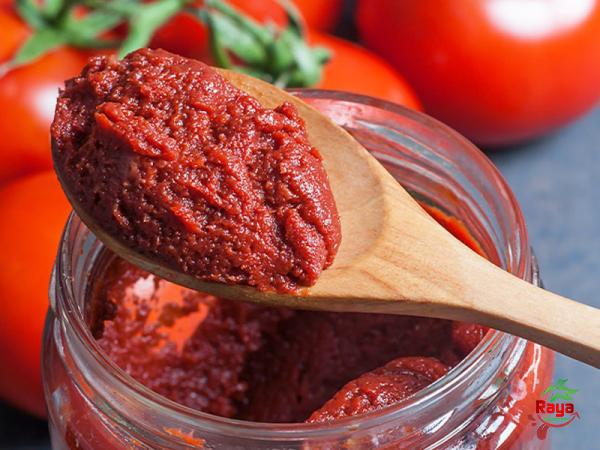 2. Tomato Sauce: Tomato sauce, while still a good source of essential nutrients, may not have the same nutritional concentration as tomato paste. Additionally, commercially available tomato sauces sometimes contain added sugars, unhealthy fats, and excessive sodium. Opting for natural and organic tomato sauce with minimal processing and added ingredients will ensure a healthier choice. V. Culinary Recommendations: Understanding the specific culinary applications of tomato paste and tomato sauce will further assist in selecting the right product for various recipes. 1. Tomato Paste: Due to its intense flavor and concentrated form, tomato paste is ideal for recipes that call for a strong tomato presence. It is particularly well-suited for dishes requiring long cooking times where the paste can develop and infuse into the overall flavor of the dish, such as simmering pasta sauces, braising meats, or making homemade ketchup or barbecue sauce. 2. Tomato Sauce: Tomato sauce offers versatility in the kitchen, serving as a ready-to-use ingredient for quick and easy recipes. It can be used as the base for classic pasta sauces, like marinara or Bolognese, or as a delicious topping for pizzas, lasagnas, or baked dishes. Tomato sauce is also a staple addition to soups and stews as it imparts a gentle tomato flavor without overpowering other ingredients. VI. Shelf Life and Storage: Understanding the shelf life and proper storage methods for tomato paste and tomato sauce is essential for maintaining their quality. 1. Tomato Paste: Tomato paste, due to its concentrated nature, has a longer shelf life compared to tomato sauce. When stored properly in a cool, dark place such as a pantry, unopened tomato paste can last up to a year. Once opened, tomato paste should be refrigerated and used within a few weeks to maintain optimum taste and quality. 2. Tomato Sauce: Tomato sauce, being less concentrated, typically has a shorter shelf life. Unopened jars or bottles of tomato sauce can be stored in a cool, dark place for about one year. However, once opened, tomato sauce should be refrigerated and consumed within a few days to prevent spoilage. Conclusion: In the tomato paste vs. tomato sauce debate, it ultimately comes down to personal preference and the specific culinary needs of each individual. Tomato paste offers a concentrated and bold flavor that enhances various dishes, while tomato sauce provides a versatile and convenient option with a milder taste. When making a choice, factors such as quality, price, overall value, versatility, health considerations, and culinary needs should be taken into account. By understanding the attributes and uses of both tomato paste and tomato sauce, consumers can make an informed purchase that best suits their cooking style, budget, and taste preferences.
2. Tomato Sauce: Tomato sauce, while still a good source of essential nutrients, may not have the same nutritional concentration as tomato paste. Additionally, commercially available tomato sauces sometimes contain added sugars, unhealthy fats, and excessive sodium. Opting for natural and organic tomato sauce with minimal processing and added ingredients will ensure a healthier choice. V. Culinary Recommendations: Understanding the specific culinary applications of tomato paste and tomato sauce will further assist in selecting the right product for various recipes. 1. Tomato Paste: Due to its intense flavor and concentrated form, tomato paste is ideal for recipes that call for a strong tomato presence. It is particularly well-suited for dishes requiring long cooking times where the paste can develop and infuse into the overall flavor of the dish, such as simmering pasta sauces, braising meats, or making homemade ketchup or barbecue sauce. 2. Tomato Sauce: Tomato sauce offers versatility in the kitchen, serving as a ready-to-use ingredient for quick and easy recipes. It can be used as the base for classic pasta sauces, like marinara or Bolognese, or as a delicious topping for pizzas, lasagnas, or baked dishes. Tomato sauce is also a staple addition to soups and stews as it imparts a gentle tomato flavor without overpowering other ingredients. VI. Shelf Life and Storage: Understanding the shelf life and proper storage methods for tomato paste and tomato sauce is essential for maintaining their quality. 1. Tomato Paste: Tomato paste, due to its concentrated nature, has a longer shelf life compared to tomato sauce. When stored properly in a cool, dark place such as a pantry, unopened tomato paste can last up to a year. Once opened, tomato paste should be refrigerated and used within a few weeks to maintain optimum taste and quality. 2. Tomato Sauce: Tomato sauce, being less concentrated, typically has a shorter shelf life. Unopened jars or bottles of tomato sauce can be stored in a cool, dark place for about one year. However, once opened, tomato sauce should be refrigerated and consumed within a few days to prevent spoilage. Conclusion: In the tomato paste vs. tomato sauce debate, it ultimately comes down to personal preference and the specific culinary needs of each individual. Tomato paste offers a concentrated and bold flavor that enhances various dishes, while tomato sauce provides a versatile and convenient option with a milder taste. When making a choice, factors such as quality, price, overall value, versatility, health considerations, and culinary needs should be taken into account. By understanding the attributes and uses of both tomato paste and tomato sauce, consumers can make an informed purchase that best suits their cooking style, budget, and taste preferences.

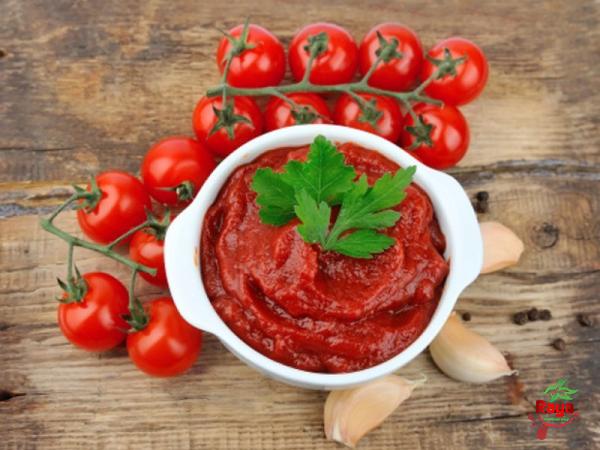



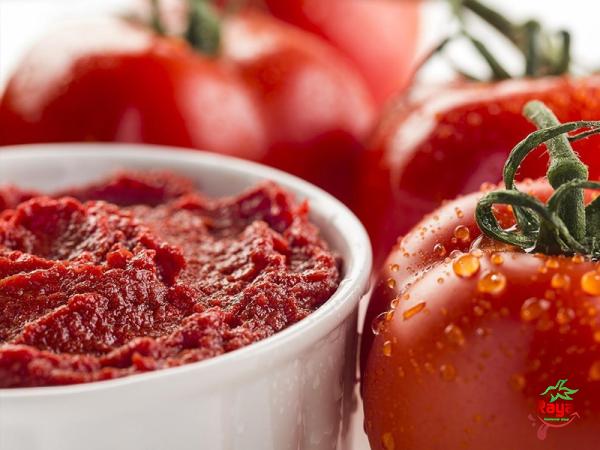
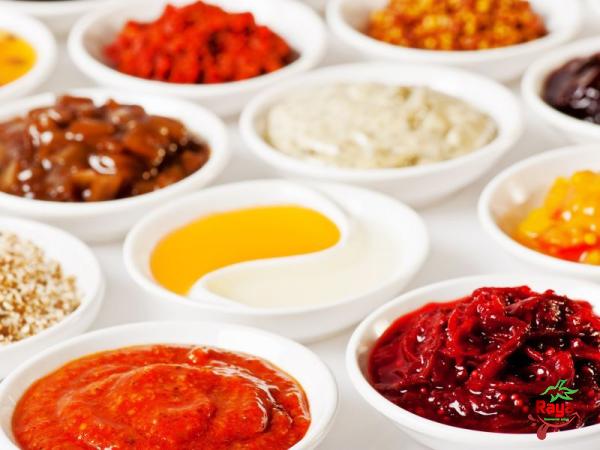

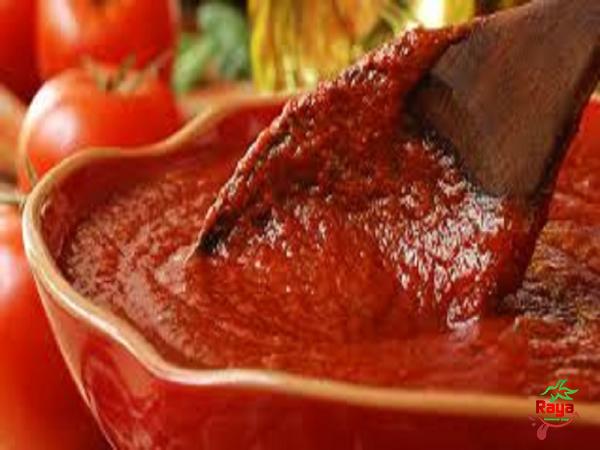
Your comment submitted.